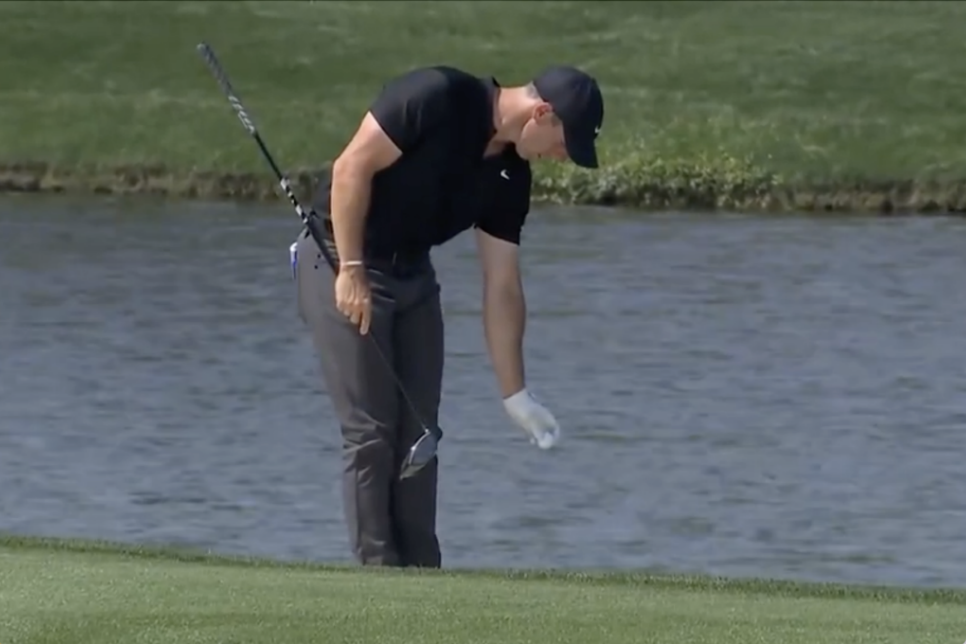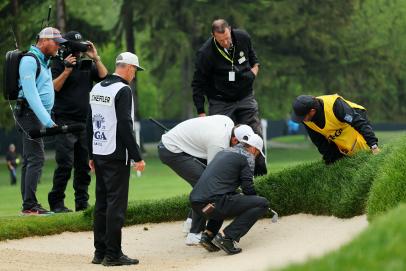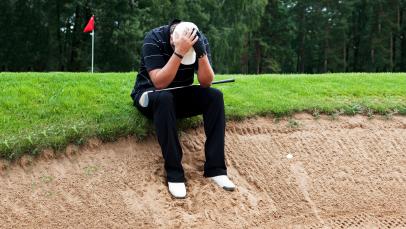Rules 101
Rules of Golf Review: How can I possibly know 'exactly' where my ball crossed into a penalty area?

A small issue involving Rory McIlroy at the Players Championship in March might have raised a good question in your mind involving the Rules of Golf: When you see your ball land in a penalty area, how can you know specifically where it last crossed the red or yellow lines when determining where to take a drop?
It really is a good question, and we'll answer it in a moment. But first, a quick synopsis of what happened to McIlroy. The four-time major champ started the first round on the 10th hole, and while playing the 18th and seventh holes, McIlroy hit tee shots into water left of the fairway. In both instances, McIlroy took a drop where he felt the ball last crossed the edge of those penalty areas (formerly known as water hazards). On the seventh hole, McIlroy got into a lengthy conversation with Jordan Spieth about whether he was actually dropping in the correct place.
If you're not familiar with this procedure, one of your options when hitting into a penalty area is to take a drop using the spot where your ball last crossed the edge of the penalty area as a reference point; it’s the option that is most often used as it likely leaves you as close as you can get to the hole while still being leveled with a penalty stroke. The area for the drop depends on a number of factors, including whether the penalty area is marked red or yellow.
For example, in many cases, water on either side of a hole is marked with red stakes or lines. If you slice one into a creek on the left side of a hole, you're allowed to take a drop in a lateral relief area within two clublengths of the point where the ball last crossed the edge of the penalty area (Rule 17.1d(3)). Be sure your drop is not closer to the hole, among a few other things to brush up on when proceeding under this rule. Also, don't forget to include the one-stroke penalty.
OK … now back to that question: How do you determine exactly where a ball last crossed into a penalty area? Here is what the Rules says about it—and the good news is you get some benefit of the doubt:
"If the point where a ball last crossed the edge of a penalty area is not known, a player must use their reasonable judgment to determine the reference point. Under Rule 1.3b(2), the player’s reasonable judgment will be accepted even if that reference point turns out to be wrong."
Luckily for players on the PGA Tour, there isn't much of a guessing game necessary. Often there are cameras (including drones and blimps) that can track the flight of a ball to give players and rules officials much better judgment as to where it crossed the edge. (Of course, not every shot has a camera trained on it, which is why the debate between McIlroy and Speith couldn’t be settled quickly or easily.)
You, of course, don't have the luxury of cameras (or marshals/volunteers) assisting your estimation, which is why the the rules permit you to use “reasonable judgment.” To further clarify, unless there turns out to be strong evidence that you're dropping in the wrong spot, it's OK if you don't pick the exact spot. But there is a caveat. Let's return to what's in the book:
"There are situations when, before the player has made a stroke, it becomes known that the reference point is wrong and this mistake must be corrected."
An example: If you take a lateral drop and are about to hit a shot, but another player in your group finds your ball in the penalty area and realizes you aren't dropping in relation to where it likely last crossed the edge (based on the evidence), you can correct the error (Rule 14.5) and take another drop in the correct spot.
Fortunately, there's no additional penalty.


